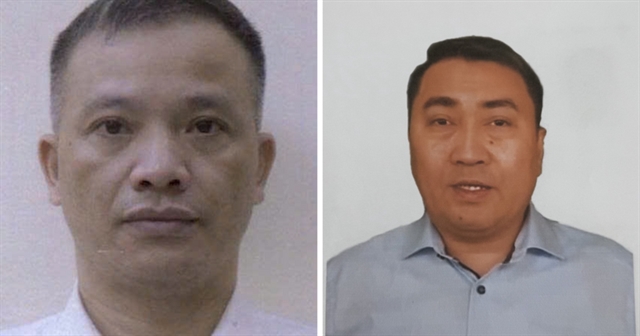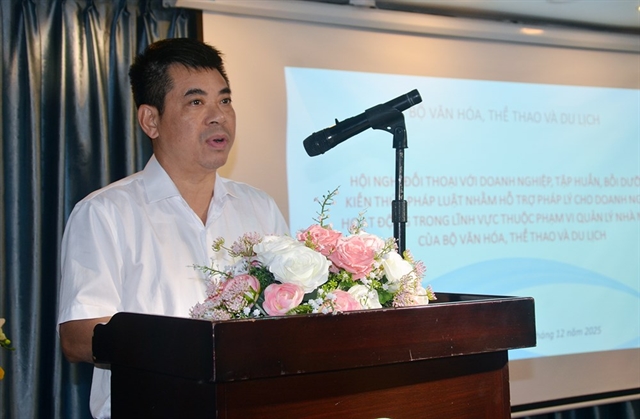 Society
Society
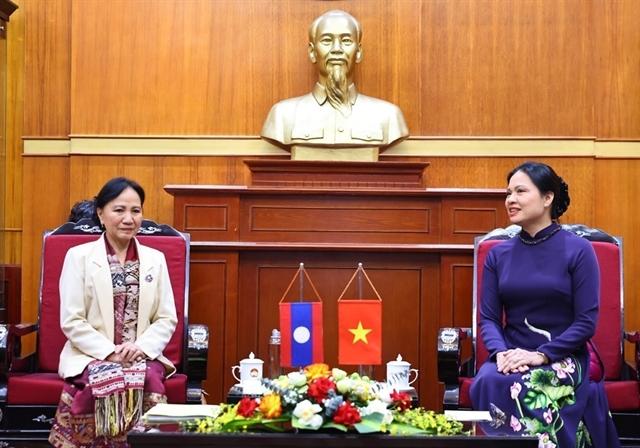
 |
| The Đạ Tông Parish church is located in Đạm Rông District in the Central Highland province of Lâm Đồng. Church goers arrive at the church as early as five in the morning. — VNS Photos Bảo Hoa |
Bảo Hoa
LÂM ĐỒNG — Deep in the forests of the Central Highlands lies a church that looks more like a communal house than a place for religious practices.
The Đạ Tông church, located in Đam Rông District, is the highlands’ first stone church and was built by the local people themselves.
For the last 16 years, it has made the religious life of more than 10,000 Catholics in the district, most of whom are K’Ho, M’nông and Cill ethnic minorities, easier.
Before it was inaugurated in 2009, Da Cat K’Jôt, 67, a M’nông resident in Đạ Tông Commune, used to have to travel half a day on mountain roads every time she wanted to attend church.
“Every time we wanted to have a baptism, make a confession or hold a marriage ceremony, anything, we had to go up to the Lang Bian Mountain in Đà Lạt,” she said.
“We left home at six in the morning and arrived at six in the evening. We carried rice and food along and had meals on the roads, two or three meals. We got bitten by leeches and mountain bugs,” she added.
“Ever since we had this church, things have gotten so much easier.”
Construction began on Đạ Tông church in 2007, when the parish of Đà Lạt celebrated 80 years since the first Thượng ethnic person got baptised in 1927, according to Đạ Tông Parish priest Nguyễn Văn Gioan.
Parishioners in Đà Lạt decided to take action for the remote Đam Rông District, where the majority of residents belong to ethnic communities.
“The people here went to the streams to pick up stones and laid them in the church yard. The church’s walls were also built with those stones,” Gioan said. “Because back then, buying construction materials from the far-away Đức Trọng District was very costly, and it was very difficult to move them here.
“So people contributed a lot of physical strength, and the Đà Lạt diocese took care of the finances to build this church.”
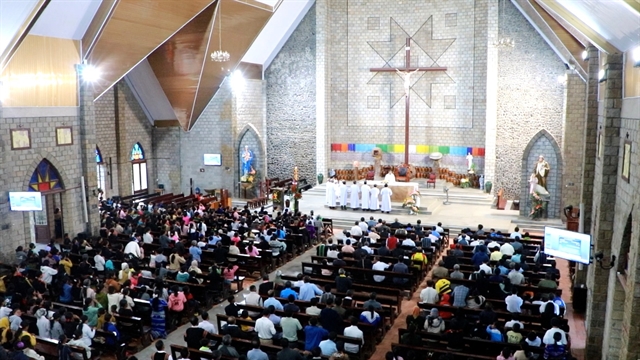 |
| A service held inside Đạ Tông church. The church is built from stones that were picked out and carved by the local people themselves. |
The church is attended by Catholics in the three communes of Đạ Tông, Đạ M'Rông and Đa Long. Having such an important place for themselves deepens their community bonds.
Kră Jăn Ha Sam, 57, also a Đạ Tông resident, said: “We study the doctrines more, we gather together and recite the Bible more, and we help each other to improve our livelihoods and support disadvantaged families.”
The Party and the State support local people a lot in religious activities, he added.
“They encourage us and our children to gather for such activities in our villages. They care a lot,” he said.
The priests and nuns also try their best to arrange activities for parishioners, especially the children, said Da Cat K’Jôt.
“The school year is ending in June, so they organise extra classes for students from grade six to grade 12. They get to learn more, and during those days, lunches will be provided,” she said.
“For holidays such as Children’s Day, they also hold ceremonies. Their proposed activities easily get approved by the authorities, and there is no restriction.”
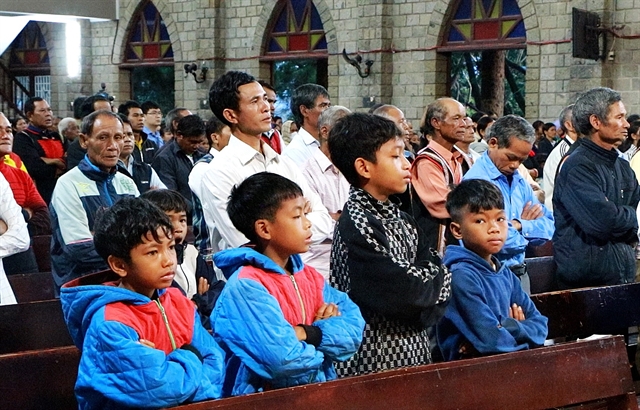 |
| Local children attend a service at the church. |
Uprisings incited in the name of religion have become a pressing issue in the Central Highlands in recent years.
Most recently, nine people were killed and two others injured in terrorist attacks in Đắk Lắk Province in June 2023. Investigations showed that several ethnic minority people in the province were incited by members of the in-exile FULRO, which is an illegal, secessionist group in the US.
Despite being located right next to Đắk Lắk, over the past few years, Đạ Tông Commune has seen no cases of violence related to religion, or ethnic minority people enticed by cults or religious groups, according to the commune’s vice chair Kra Jan Ha Sieng.
“We communicate a lot with local groups and branches of the Đạ Tông parish,” he said. “We meet and collaborate with local leaders so they will speak to other parishioners in their daily and weekly religious gatherings to keep them from being influenced by dissidents in the name of religion.
“As a result of our efforts, at the moment, in our Đạ Tông commune, there is no group or community that entices or incites people to disrupt social order.”
As religious beliefs can be seen as a weakness that is vulnerable to exploitation, balancing religious freedom and social stability is essential for communities in the Central Highlands. — VNS

